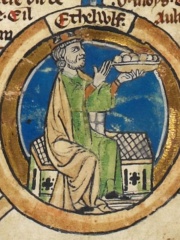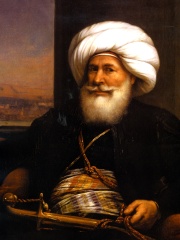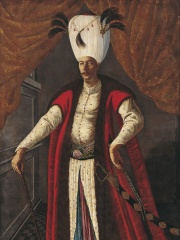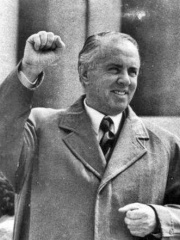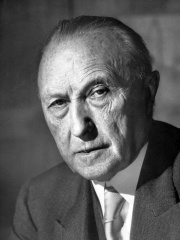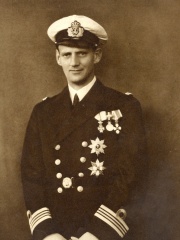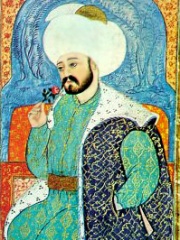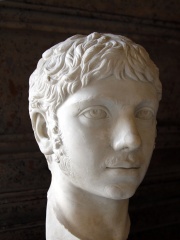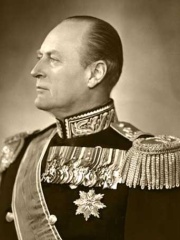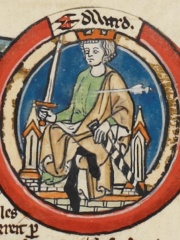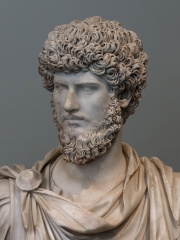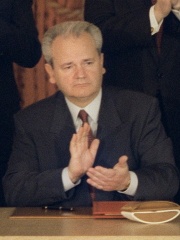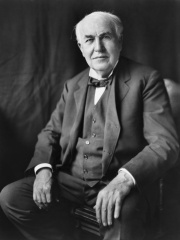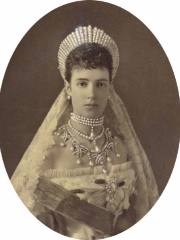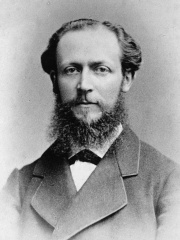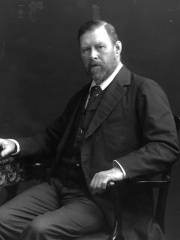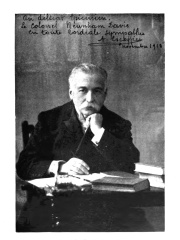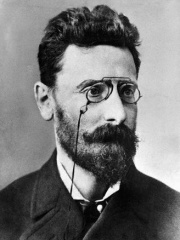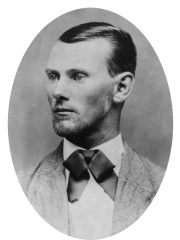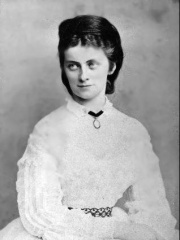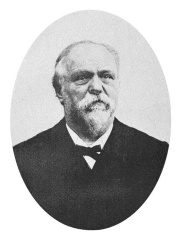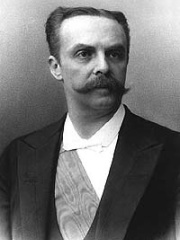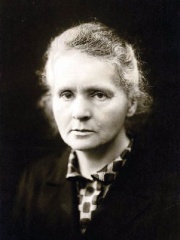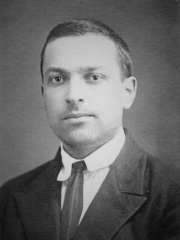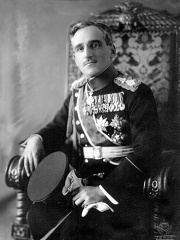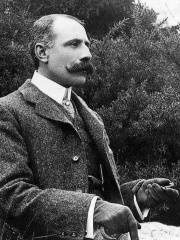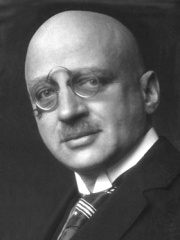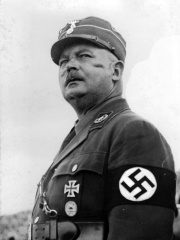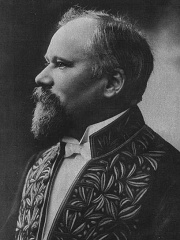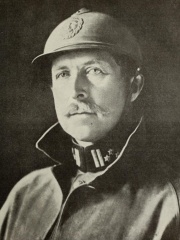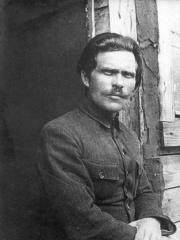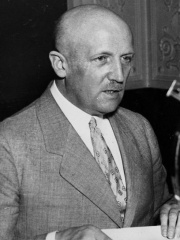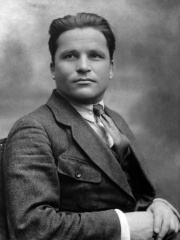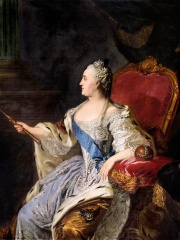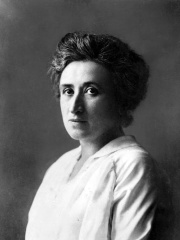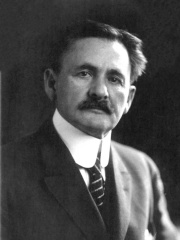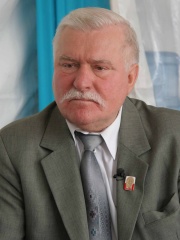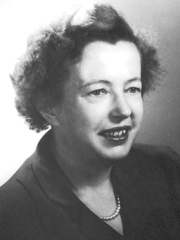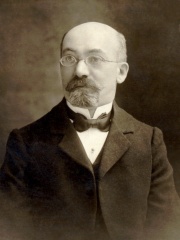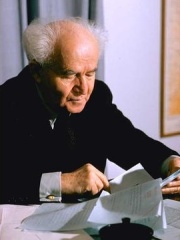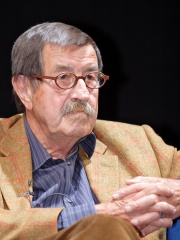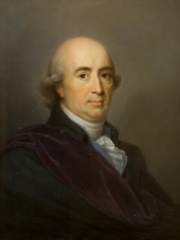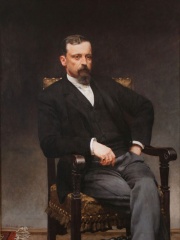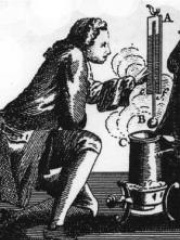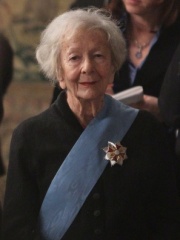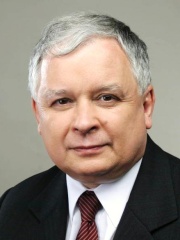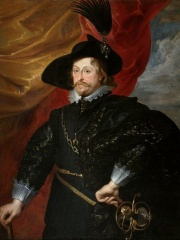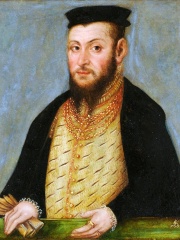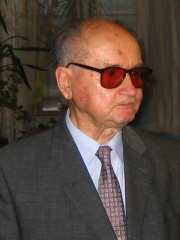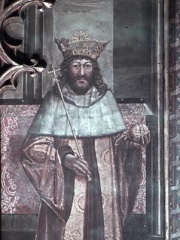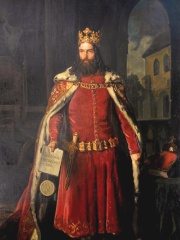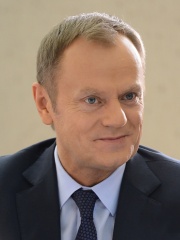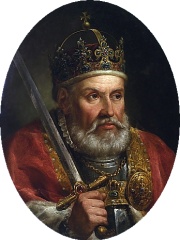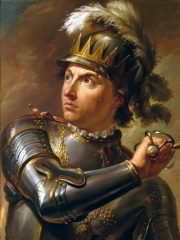POLITICIAN
Paul von Hindenburg
1847 - 1934
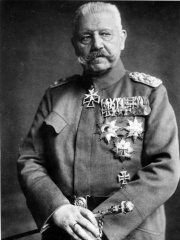
 Paul von Hindenburg
Paul von Hindenburg
Paul Ludwig Hans Anton von Beneckendorff und von Hindenburg (2 October 1847 – 2 August 1934) was a German military officer and statesman who led the Imperial German Army during World War I and later became President of Germany from 1925 until his death in 1934. He played a key role in the Nazi seizure of power in 1933 through his appointment of Adolf Hitler as Chancellor of Germany. Paul von Hindenburg was born to a family of minor Prussian nobility in the Grand Duchy of Posen. Upon completing his education as a cadet, he enlisted in the Third Regiment of Foot Guards. Read more on Wikipedia
His biography is available in 86 different languages on Wikipedia (up from 83 in 2024). Paul von Hindenburg is the 270th most popular politician (down from 181st in 2024), the 12th most popular biography from Poland (down from 10th in 2019) and the 2nd most popular Polish Politician.
Paul von Hindenburg was a German field marshal who became the first President of Germany in 1925. He is most famous for being the commander of the German army during World War I.
Memorability Metrics
Page views of Paul von Hindenburg by language
Among POLITICIANS
Among politicians, Paul von Hindenburg ranks 270 out of 19,576. Before him are Æthelwulf, King of Wessex, Muhammad Ali of Egypt, Mehmed IV, Enver Hoxha, Konrad Adenauer, and Frederick IX of Denmark. After him are Mehmed I, Elagabalus, Olav V of Norway, Edward the Martyr, Lucius Verus, and Slobodan Milošević.
Most Popular Politicians in Wikipedia
Go to all RankingsÆthelwulf, King of Wessex
795 - 858
HPI: 82.01
Rank: 264
Muhammad Ali of Egypt
1769 - 1849
HPI: 81.97
Rank: 265
Mehmed IV
1642 - 1693
HPI: 81.94
Rank: 266
Enver Hoxha
1908 - 1985
HPI: 81.91
Rank: 267
Konrad Adenauer
1876 - 1967
HPI: 81.91
Rank: 268
Frederick IX of Denmark
1899 - 1972
HPI: 81.91
Rank: 269
Paul von Hindenburg
1847 - 1934
HPI: 81.91
Rank: 270
Mehmed I
1386 - 1421
HPI: 81.90
Rank: 271
Elagabalus
203 - 222
HPI: 81.84
Rank: 272
Olav V of Norway
1903 - 1991
HPI: 81.84
Rank: 273
Edward the Martyr
962 - 978
HPI: 81.82
Rank: 274
Lucius Verus
130 - 169
HPI: 81.78
Rank: 275
Slobodan Milošević
1941 - 2006
HPI: 81.78
Rank: 276
Contemporaries
Among people born in 1847, Paul von Hindenburg ranks 3. Before him are Thomas Edison, and Alexander Graham Bell. After him are Maria Feodorovna, Otto Wallach, Bram Stoker, Auguste Escoffier, Joseph Pulitzer, Jesse James, Duchess Sophie Charlotte in Bavaria, Georges Sorel, and Jean Casimir-Perier. Among people deceased in 1934, Paul von Hindenburg ranks 2. Before him is Marie Curie. After him are Lev Vygotsky, Alexander I of Yugoslavia, Edward Elgar, Fritz Haber, Ernst Röhm, Raymond Poincaré, Albert I of Belgium, Nestor Makhno, Kurt von Schleicher, and Sergey Kirov.
Others Born in 1847
Go to all RankingsThomas Edison
INVENTOR
1847 - 1931
HPI: 91.65
Rank: 1
Alexander Graham Bell
INVENTOR
1847 - 1922
HPI: 85.31
Rank: 2
Paul von Hindenburg
POLITICIAN
1847 - 1934
HPI: 81.91
Rank: 3
Maria Feodorovna
COMPANION
1847 - 1928
HPI: 78.58
Rank: 4
Otto Wallach
CHEMIST
1847 - 1931
HPI: 78.30
Rank: 5
Bram Stoker
WRITER
1847 - 1912
HPI: 75.89
Rank: 6
Auguste Escoffier
WRITER
1847 - 1935
HPI: 74.28
Rank: 7
Joseph Pulitzer
JOURNALIST
1847 - 1911
HPI: 73.71
Rank: 8
Jesse James
MAFIOSO
1847 - 1882
HPI: 73.31
Rank: 9
Duchess Sophie Charlotte in Bavaria
POLITICIAN
1847 - 1897
HPI: 72.76
Rank: 10
Georges Sorel
PHILOSOPHER
1847 - 1922
HPI: 70.56
Rank: 11
Jean Casimir-Perier
POLITICIAN
1847 - 1907
HPI: 69.85
Rank: 12
Others Deceased in 1934
Go to all RankingsMarie Curie
PHYSICIST
1867 - 1934
HPI: 94.30
Rank: 1
Paul von Hindenburg
POLITICIAN
1847 - 1934
HPI: 81.91
Rank: 2
Lev Vygotsky
PSYCHOLOGIST
1896 - 1934
HPI: 80.34
Rank: 3
Alexander I of Yugoslavia
POLITICIAN
1888 - 1934
HPI: 80.02
Rank: 4
Edward Elgar
COMPOSER
1857 - 1934
HPI: 79.61
Rank: 5
Fritz Haber
CHEMIST
1868 - 1934
HPI: 78.61
Rank: 6
Ernst Röhm
MILITARY PERSONNEL
1887 - 1934
HPI: 77.03
Rank: 7
Raymond Poincaré
POLITICIAN
1860 - 1934
HPI: 76.89
Rank: 8
Albert I of Belgium
POLITICIAN
1875 - 1934
HPI: 76.09
Rank: 9
Nestor Makhno
MILITARY PERSONNEL
1888 - 1934
HPI: 75.47
Rank: 10
Kurt von Schleicher
POLITICIAN
1882 - 1934
HPI: 74.97
Rank: 11
Sergey Kirov
POLITICIAN
1886 - 1934
HPI: 74.37
Rank: 12
In Poland
Among people born in Poland, Paul von Hindenburg ranks 12 out of 1,694. Before him are Catherine the Great (1729), Rosa Luxemburg (1871), Albert A. Michelson (1852), Lech Wałęsa (1943), Maria Goeppert Mayer (1906), and L. L. Zamenhof (1859). After him are David Ben-Gurion (1886), Günter Grass (1927), Johann Gottfried Herder (1744), Henryk Sienkiewicz (1846), Daniel Gabriel Fahrenheit (1686), and Wisława Szymborska (1923).
Others born in Poland
Go to all RankingsCatherine the Great
NOBLEMAN
1729 - 1796
HPI: 86.60
Rank: 6
Rosa Luxemburg
SOCIAL ACTIVIST
1871 - 1919
HPI: 85.33
Rank: 7
Albert A. Michelson
PHYSICIST
1852 - 1931
HPI: 84.49
Rank: 8
Lech Wałęsa
POLITICIAN
1943 - Present
HPI: 82.76
Rank: 9
Maria Goeppert Mayer
PHYSICIST
1906 - 1972
HPI: 82.73
Rank: 10
L. L. Zamenhof
PHYSICIAN
1859 - 1917
HPI: 82.06
Rank: 11
Paul von Hindenburg
POLITICIAN
1847 - 1934
HPI: 81.91
Rank: 12
David Ben-Gurion
POLITICIAN
1886 - 1973
HPI: 81.57
Rank: 13
Günter Grass
WRITER
1927 - 2015
HPI: 80.42
Rank: 14
Johann Gottfried Herder
PHILOSOPHER
1744 - 1803
HPI: 79.32
Rank: 15
Henryk Sienkiewicz
WRITER
1846 - 1916
HPI: 79.31
Rank: 16
Daniel Gabriel Fahrenheit
PHYSICIST
1686 - 1736
HPI: 79.17
Rank: 17
Wisława Szymborska
WRITER
1923 - 2012
HPI: 78.89
Rank: 18
Among POLITICIANS In Poland
Among politicians born in Poland, Paul von Hindenburg ranks 2. Before him are Lech Wałęsa (1943). After him are David Ben-Gurion (1886), Lech Kaczyński (1949), Władysław IV Vasa (1595), Sigismund II Augustus (1520), Wojciech Jaruzelski (1923), Vladislaus II of Hungary (1456), Casimir III the Great (1310), Donald Tusk (1957), Sigismund I the Old (1467), and Władysław III of Poland (1424).
Lech Wałęsa
1943 - Present
HPI: 82.76
Rank: 1
Paul von Hindenburg
1847 - 1934
HPI: 81.91
Rank: 2
David Ben-Gurion
1886 - 1973
HPI: 81.57
Rank: 3
Lech Kaczyński
1949 - 2010
HPI: 77.12
Rank: 4
Władysław IV Vasa
1595 - 1648
HPI: 76.47
Rank: 5
Sigismund II Augustus
1520 - 1572
HPI: 76.41
Rank: 6
Wojciech Jaruzelski
1923 - 2014
HPI: 76.03
Rank: 7
Vladislaus II of Hungary
1456 - 1516
HPI: 76.02
Rank: 8
Casimir III the Great
1310 - 1370
HPI: 75.79
Rank: 9
Donald Tusk
1957 - Present
HPI: 75.38
Rank: 10
Sigismund I the Old
1467 - 1548
HPI: 75.06
Rank: 11
Władysław III of Poland
1424 - 1444
HPI: 74.96
Rank: 12
